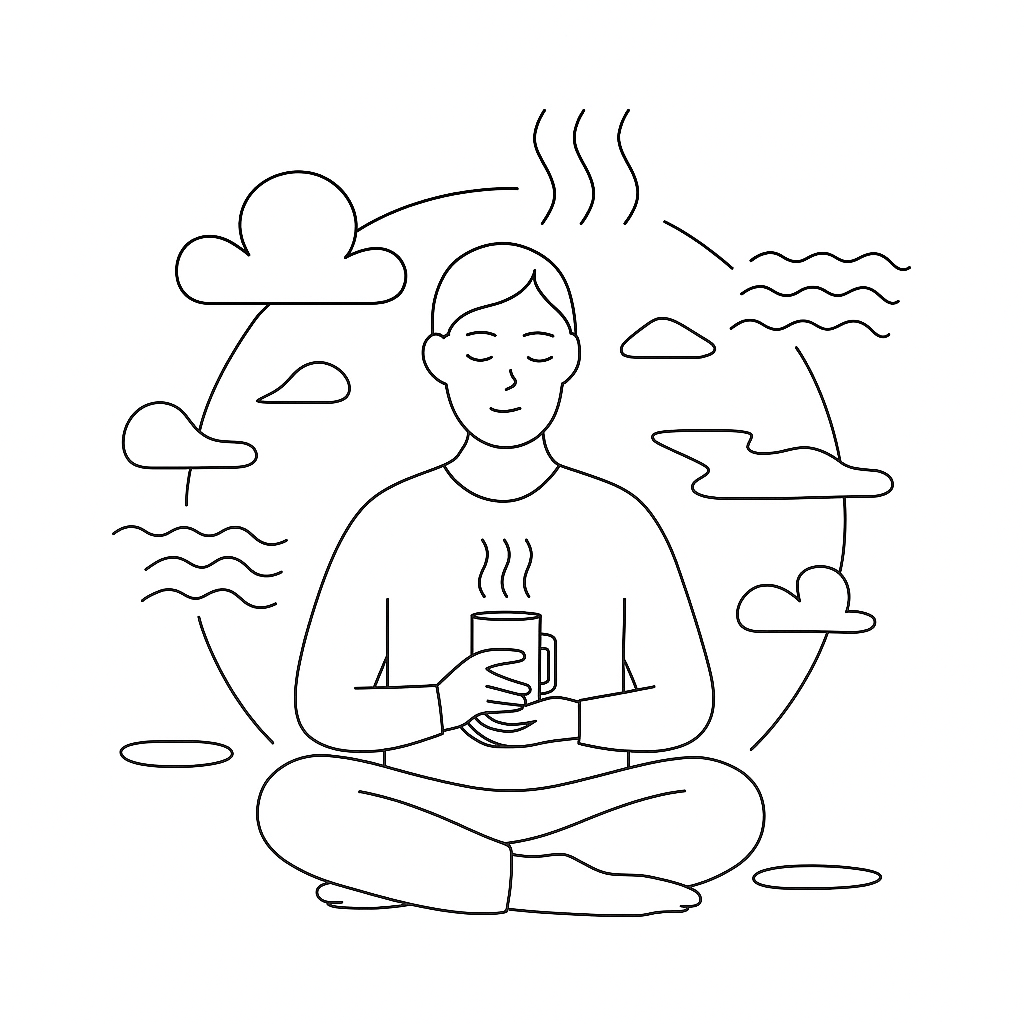The rhythm of a day can either carry momentum or drain it. Without a grounding routine, it’s easy to move from one task to the next on autopilot—forgetting to breathe, to pause, to be. Creating a daily routine rooted in mindfulness doesn’t require overhauling an entire life. It simply invites consistency in the small choices made each day.
The following guide highlights six accessible practices that support a more intentional, calm, and energized lifestyle.
1. Begin with the Breath
Each morning offers a reset, and the breath is a powerful place to start. Before reaching for a phone or diving into the day’s agenda, take a few minutes to consciously inhale and exhale. Try a simple rhythm: breathe in for four counts, hold for four, exhale for four, and hold again for four. Repeat this cycle for five minutes.
This kind of breathwork can regulate the nervous system, increase clarity, and create spaciousness in the mind—even before coffee.
2. Move Gently and Consistently
Movement doesn’t have to mean high-intensity workouts or hour-long classes. It can be as simple as a few stretches in bed, a short walk outside, or a yoga flow that matches the day’s energy level. Movement awakens the body and helps release stagnant energy from sleep or stress.
Choosing intuitive movement—what feels right in the moment—honors the body’s wisdom and builds a more sustainable, enjoyable habit over time.
3. Sit in Stillness
Meditation isn’t about clearing the mind; it’s about observing it. A regular meditation practice, even for just 10 minutes a day, can foster patience, self-awareness, and resilience. Whether it's a guided meditation, silent sitting, or using a mantra, the key is consistency, not perfection.
Designate a quiet space, set a timer, and return to the breath each time the mind wanders. Over time, stillness becomes a refuge rather than a challenge.
4. Nourish with Intention
Food is more than fuel; it’s information for the body. Choosing whole, unprocessed foods where possible—colorful fruits, leafy greens, proteins, and healthy fats—supports energy and emotional balance. Just as important as what is eaten is how it’s eaten.
Try eating without distractions for at least one meal per day. Savor the flavors, chew slowly, and notice the signals of hunger and fullness. This small shift can transform eating into a grounding, joyful ritual.
5. Set an Anchor for the Day
An anchor is a word, phrase, or value that offers guidance throughout the day. It might be “ease,” “focus,” “compassion,” or any word that resonates. Setting an anchor helps create a touchpoint when things get chaotic or overwhelming.
To choose an anchor, pause after meditation or breathwork and ask, “What quality would support this day?” Write it down, speak it aloud, or repeat it internally during moments of stress or decision-making.
6. Prioritize Rest and Reflection
Rest is not a reward—it’s a requirement. Quality rest can look like taking breaks between tasks, stepping outside for fresh air, or ensuring adequate sleep. In the evening, aim to wind down without screens for at least 30 minutes before bed.
Journaling can also help release lingering thoughts. Try writing a few lines about what went well that day, what felt challenging, and what to carry forward into tomorrow. This practice closes the day with intention and presence.
Consistency Over Complexity
The power of a daily routine isn’t in how elaborate it is—it’s in the repetition. Choose one or two of these practices to begin. Integrate them slowly. Let the routine evolve with the seasons of life. A mindful day doesn’t have to be perfect; it just needs to be honest.
Returning to the breath, to the body, and to the present moment each day builds inner stability that extends far beyond the morning hours.
Ready to deepen your inner peace and connection with nature? Don’t miss out on the “Journey Through Meditation” eBook — your complete guide to building a consistent, calm, and centered practice. Grab your copy here.

